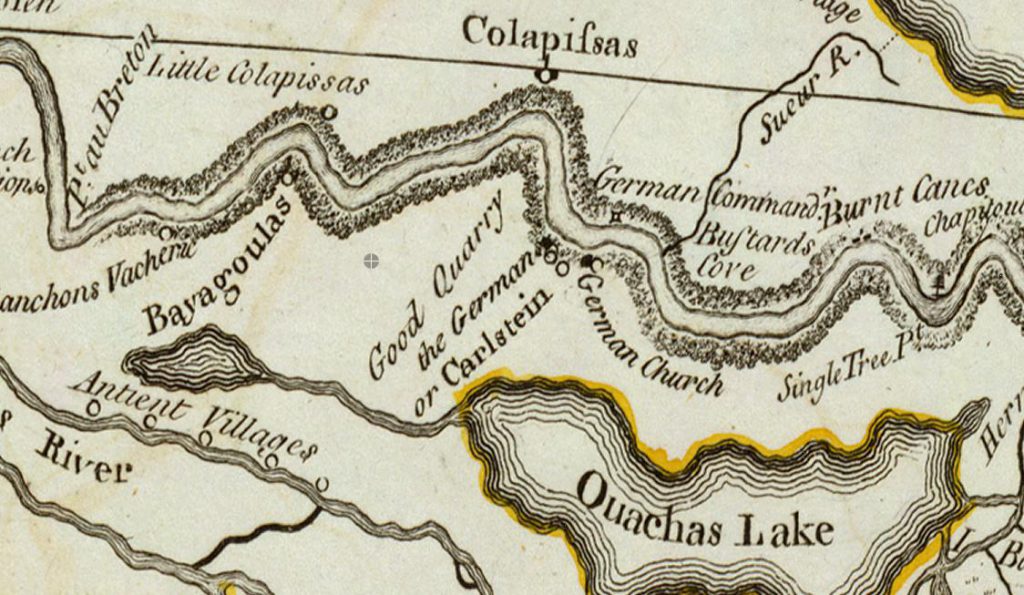
The German-Acadian Coast Historical and Genealogical Society
The German and Acadian Coasts are not “coasts” as one would think of the term today as land along the seashore of an ocean. A coast by definition is “the land near the shore” but in this case, the shore is the land along the Mississippi River. During the 18th and 19th centuries the term coast was used to describe the distinct settlements situated just above New Orleans along the Mississippi River’s edge. There are naturally two coasts. The left coast or left bank was the land located on your left-hand side if traveling down river (the east bank) and the right coast or right bank was the land located on your right-hand side if traveling down river (the west bank).
They are known as the German and Acadian Coasts for the first European settlers to establish along their shores. The “First German Coast” was located in current day St. Charles Parish along the west bank of the river between the current day communities of Killona and Taft, settled by Germans as early as the 1720s. As the settlement eventually grew, others began to settle further up river in present day St. John the Baptist Parish, near Edgard, thus the west bank of today’s St. John the Baptist Parish became known as the “Second German Coast.” Over the years, the population grew and the settlement was dispersed along the entire coast on both sides of the river and thus St. Charles and St. John the Baptist Parish collectively became known as the “German Coast.”
The “First Acadian Coast” was established along the Mississippi River in St. James Parish near the St. James Catholic Church. These Acadians, later to be known as Cajuns, were exiled from Acadia (today Nova Scotia, New Brunswick, and Prince Edward Island, Canada) beginning in 1755 by Britain. By the 1760s the Acadians had made their way to the haven of French (later Spanish) Catholic Louisiana. Later, as other Acadians received word from family and friends in Louisiana, many of those exiled to France or along the eastern U.S. seaboard, traveled to Louisiana, reuniting with family and establishing homes as well. However, this would call for more land and the “Second Acadian Coast” was founded further up river in today’s Ascension Parish. Thus St. James and part of Ascension made up the “Acadian Coast.” And anyone tracing their family ancestry through German and Acadian coasts can tell you that many of the Germans and Acadians did not all stay in their original settlements. Many moved up and down the river, searching for better farm or better opportunities in different locations and thus many intermarried and many of the German names are found just as frequently in St. James, and the Acadian names in St. John and St. Charles.
